Contrary to media reports, VW isn’t bringing back the Microbus – just as it never brought back the Beetle, either.
It did bring back a car that looked like the Beetle, back in the late’ 90s. But that’s about all it had in common with the Beetle people remembered from the ‘70s, which was the last time VW sold the real – as opposed to “new” – Beetle here in the U.S. (VW was able to continue selling the real Beetle for another 30 years in Mexico, where people were freer to buy the kinds of cars they wanted to buy – as opposed to here, where people are free to buy the cars government allows them to buy.) 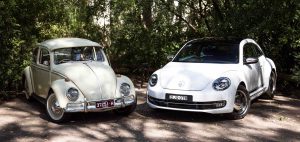
The car that looked like a Beetle but which was really a re-bodied Golf sold ok at first and then not so well, after awhile. Probably – at first – because it brought back memories of a car so many people wished they could still buy but weren’t allowed to anymore. Then not not so well, once people became aware of what the new car was – and wasn’t. It may have kinda-sorta looked like the car they remembered but unlike that car, it wasn’t simple or inexpensive to repair, yourself. Like the Golf it was underneath its Beetle-looking skin, it was a complex, expensive package of computer-controlled components beyond the tool set of most latter-day Hippies equipped with just a screwdriver and a crescent wrench.
Now comes a vehicle that is meant to look like the old Microbus of the ‘60s and ‘70s – which was a re-bodied Beetle. This new vehicle isn’t, of course, because there isn’t a Beetle available to re-body – even in Mexico, which has caught up to the United States and also forbids Mexicans from buying cars like the original – the real as opposed to “new” – Beetle.
It is not legally allowed in either country to build a car like the real Beetle – or the Microbus it was based upon. Such vehicles are not “safe,” according to the government – notwithstanding the millions of people who weren’t killed by the real Beetles (and Microbuses) they owned, kind of like the bug that’s no longer in the news all-of-sudden that for two years was used as the excuse to not allow people to do anything. In fact, far fewer than the 99.8 percent who weren’t killed by the bug that’s no longer au currant were killed by the other Bug, but nevermind. The thing lacked six or even any air bags, didn’t have a back-up camera or “advanced” driver “assistance” electronics – which is partially how government defines “safe” in these latter days. 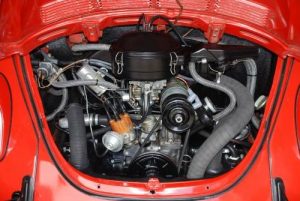
And – the big one – its pushmower-simple air-cooled engine that a Hippie or anyone else with a screwdriver and a crescent wrench could keep going couldn’t get past the emissions regs of the late ‘70s. Forget today’s regs, which insist on essentially “zero emissions” even though nearly zero-emissions ought to satisfy anyone who thinks solving the air pollution problem is sufficient – as opposed to solving problems that aren’t existent.
This is why the vehicle that looks like the old Microbus, the 2024 ID.Buzz, is electric, which is considered to be “zero emissions,” at least for the moment. In another moment, it will be discovered that utility plants aren’t “zero emissions” and neither are the industrial mining operations that scrounge the raw materials from the earth which are then made into enormous battery packs full of very environmentally unfriendy materials.
But nevermind that, for the moment.
The ID.Buzz (get it? say it again. . . Buzz . . . Bus) does have one thing in common with its kinda-sorta namesake. It is rear-wheel-drive, something VW hasn’t offered since it last offered real-deal Beetles and their various iterations back in the ’70s, here. But that is where the functional – and economic – commonalities end.
Word is the Buzz-bus will sticker for about $40,000 – to start. Closer to $60k, loaded. Perhaps a few aging Hippies who traded in their corduroy bell bottoms for a corporate suit, back in the ’70s, have enough money, man, to afford this Buzz. But for the youth of today, it’s a buzz-kill because no matter how indoctrinated they may be in the tenets of the Cult of Climate Change Abiding, not many young folk can afford to spend $40,000 (to start) on a car. 
Or a bus, for that matter.
The affordability problem is arguably a larger problem than the EV-specific problems of abbreviated range and extended recharge times because even if the latter two problems were solved – even if an EV could travel the 300-plus miles that any non-electric car can easily travel and be recharged in the less than five minutes it takes to refuel any non-electric car – it won’t matter if people can’t afford it. A personal jet would be nice, too. How many have one of those?
The difference is the same.
Back in ’77, you could buy a real-deal Microbus for just over $5k, which amounts to about $24k today. The Buzz is expected to cost almost twice that, to start. Which is a buzzkill for people who haven’t got that kind of money, man. Which is likely to be more people, given that our money is being made worth less almost every day, by the Man.
People like Transportation Secretary Pete Buttigieg say people worried about the high gas prices caused by the (old) Man can buy a vehicle like the Buzz to not have to worry about it. They only have to worry about how to pay for the vehicle. Plus, the electricity – which isn’t going to cost less as demand goes up while supply goes down, also because of the (old) Man, who has done all he can to reduce generating capacity.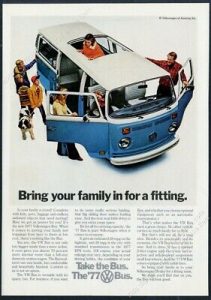
Nevermind that, too.
On the upside, the Buzz is roomy – because it’s shaped like the old Microbus. This being the ideal kind of shape for an electric anything, because it allows for the huge pack of batteries to be hidden under the floor rather than take up space in the trunk. And it will reportedly have about four times as much power as the model its shape is meant to recollect – which it will need, on account of the 1,000-plus pounds of batteries it has to haul around.
No doubt it will have amenities that were rare to nonexistent in the old Microbus, including AC (which was a problem in the old Beetle-derived units because the engine had enough trouble just moving the vehicle and adding AC made that even harder, which tended to make the engine overheat, too).
And it will, of course, recall fond memories of the original via simulacrum features such as fold-out tables and – just maybe – a camper-style pop top and sink/’fridge combo. All very nice and none of it very affordable, which was perhaps the defining essence of the real Microbus.
Like the real – as opposed to “new” – Beetle, it was a bus for practically anyone, which is what it made it so practical. Sure, it was slow – but so? It got you there, which was once regarded as the main point of a vehicle. Especially for people who would otherwise be walking (or taking the bus) there.
Of course, VW isn’t allowed to build cars like the real Beetle – or the bus – anymore. And that’s the real Buzzkill.
. . .
Got a question about cars, bikes or anything else? Click on the “ask Eric” link and send ’em in! Or email me at EPeters952@yahoo.com if the @!** “ask Eric” button doesn’t work!
If you like what you’ve found here please consider supporting EPautos.
We depend on you to keep the wheels turning!
Our donate button is here.
If you prefer not to use PayPal, our mailing address is:
EPautos
721 Hummingbird Lane SE
Copper Hill, VA 24079
PS: Get an EPautos magnet or sticker or coaster in return for a $20 or more one-time donation or a $10 or more monthly recurring donation. (Please be sure to tell us you want a magnet or sticker or coaster – and also, provide an address, so we know where to mail the thing!)
My eBook about car buying (new and used) is also available for your favorite price – free! Click here. If that fails, email me at EPeters952@yahoo.com and I will send you a copy directly!




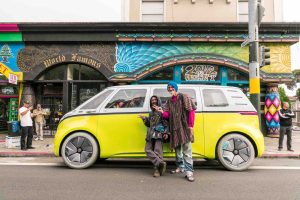







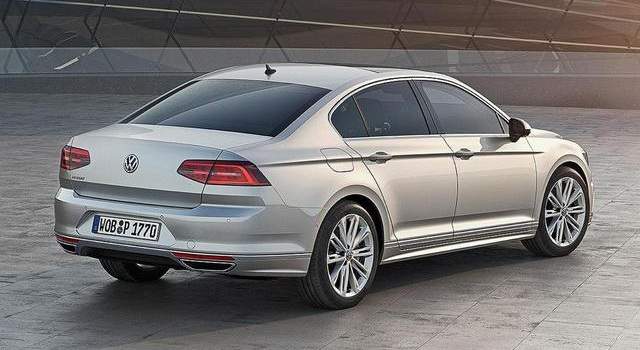
I had a 1964 VW bus just like the one in the lead photo, 21 windows and the sliding canvas roof. It was a lot of fun, I sold it for $300 dollars, what a mistake, today the sell for $255,000 restored. I had a 1969 Z-28 Camero, and a 1968 SS Camero with a 396, but the bus seems to be the one that is worth the most. Who woulda thunk?
Hi Dave,
I feel your pain! Those old VW busses were abundant – and cheap – as used beaters back in the ’80s when I was in high school. We didn’t know what we had, eh? And about that ’69 Z-28… also in high school, a friend of mine bought a used ’71 GTX 440 for his first car. Which he could do because it cost about the same as a thrashed Corolla costs today. The parking lot was full of such, because they were just old cars then and even high school kids could afford to own them.
I tell this to high school kids today and they dinna believe me.
Although my stepdad had an original (’70s) VW Bus, I never had heard of “microbus”. OK, so I went to search the internet: “vw microbus”
Interesting how that preferentially gives you NOTHING BUT the newer buzzkill bus.
OK, so I tried “vw microbus -buzz” and it still came up with the buzzkill bus. So I added “-electric” to the search!
THEN! Oh… well… nothing. Literally 3 results from Bing showing almost nothing relevant. I just wanted to look at the damn original in a picture. BUT NO!
Nope. I can’t even look at what was actual reality. I have to only look at what the woke bastards want me to look at. Tired of this shit TBH.
In 1978 I was torn between buying a VW microbus or a Ford econoline. I opted for the Ford, I drove it for 200,000 miles before selling it. I am glad I got the econoline, I totaled a mercury montego that pulled out in front of me, I drove home. Next I was rear ended by a Buick electra 225 which was totalled, the front bumper pushed back to the firewall, I drove home. The econoline was built like a brick shithouse. I dont think the VW would have fared as well. Nowadays if all airbags deploy, a car is totalled. Dont even get me started on the 2004 VW passat I bought that cost me $7000 just to keep it running over the lifetime I owned it.
Very much the case, AMRAT –
The VW was a lightly built unibody; that old Ford was body-on-frame and as toughly built as any pick-up or truck-based SUV.
I saw where the spike in Nickel prices is causing outfits like Tesla and Rivian to switch to a different type of battery, common in Chinese EVs, to save money. The downside? Less range. Hmmmm…
I actually like the looks of these, and like the idea of a electric commuter van. If they actually make them and actually sell them for $40k, they will do pretty well in the big markets of the blue cities.
That doesn’t make them a practical idea, but then neither was the muscle car. The big blue cities would be far better served if they want to use less natural fuels by using lots of mass transit- lots of diesel/electric hybrid buses and electric trains/subways.
Probably not a bad idea to conserve fuel and scarce expensive real estate. And in the cities, they expect to have to put up with unreasonable limits on your lifestyle for a variety of good reasons. In the vast majority of the country, these will never be a significant player, and when people realize how really wasteful a really heavy, disposable vehicle with no resale value is the fad will die out.
The real problem is group think- the blue city fools who believe they will solve nonexistent problems by forcing everyone into the same mold when it definitely is counterproductive. Think masks, seat belts, vaccines, motor vehicle safety standards, outlawing wood stoves, hate crimes laws, and a thousand other acts of narrow minded and short sighted tyranny.
The only cure there ever has been for arrogant rulers is saying no and making it stick.
It UTTERLY disgusts me when they try to capitalize on a classic by appropriating it’s name and [somewhat] likeness to make something which is the diametric opposite of what that classic was!!! Not to mention the cluelessness of those who would purchase and drive such a fraud……
Disgusting!
Amen that, Nunz!
I even disliked the Firebird after 1981 – when it became a re-skinned Camaro, with the identical Chevy-made drivetrain. Not that I dislike the Camaro or Chevy drivelines; far from it. But a Camaro is not a Firebird and Chevy isn’t a Pontiac.
Same here, Eric! I can at least appreciate the appeal of the first and second gen Camaros and Firebirds (More so the 2nd)….but those 3rd gen wedge-shaped things were just goof…and like ya said, were just all the same.
You mean like Star Wars, Star Trek, Ghostbusters Terminator, the new extra diverse Lord of the Rings series……look up Critical Drinker on boob tube. Funny stuff
Der Hippiewagen ist kaput!
And in other “high tech” stupidity,
https://www.pe.com/2022/03/11/electric-license-plates-are-out-there-and-could-become-commonplace/
Let’s see….
Tell me again why I should pay $899 to buy, plus $55 per year “maintenance” for a battery powered license plate, which can *track* me, and monitor my driving behavior.
Explain to me again why there are people who will stand in line to buy their own chains.
Producing EV versions of iconic vehicles with hardcore fan bases strikes me as the manufacturers playing with fire, the situation with the largest potential for disaster being the F150 Lightning.
VW may well get away with the Microbus revival since the audience is small, dedicated, and in no way expects practicality, regardless of how much time/money they sink into what is essentially a toy. However, most truck buyers generally expect *some* utility out of their vehicles, even if it is just a commuting appliance that occasionally hauls home a big screen TV.
This should prove to be an interesting year. I believe the F150 EV fallout will be serious enough to make people stop and think about where we are headed.
Ok, maybe I’m engaging in wishful thinking.
Well, I just got my 1989 (one owner) F150 back from the shop yesterday. New fuel tank selector valve installed, which means I have 16 gallons forward tank and 12 gallons aft, for a total of 28 gallons fuel capacity.
With possible fuel shortages looming (I do remember the “Arab oil embargo” from the 1970s) I am likely to be looking for Jerry cans, not “electron cans.”
When next summer’s brownouts materialize, IC vehicles will still be operational, provided they have fuel. EVs will be parked, INOP. Unless, of course, you’ve bought your own gasoline/diesel generator to charge your EV.
A “range extender” (read: gas powered generator) will be an option on the Ford EV F150.
Chevy announced that they will provide one also with the EV Silverado.
“..Ok, maybe I’m engaging in wishful thinking…”
That’s alright I’m thinking that too.
Even in their heyday I couldn’t understand the cult like following of the VWs. They’re ugly; they sound stupid; and the Herbie movies sucked.
Hi Mike,
Beauty is in the eye of the beholder. As a former owner of several old VWs, what was beautiful to me about them was their deliberate simplicity, which made them crude but also very easy (and cheap) to keep. Sure, they didn’t have much power and weren’t exactly comfortable. But for a teenager with maybe a few hundred bucks to spend on a first car – or someone older who didn’t want to spend more than a few hundred bucks on a car – a used VW was just the ticket. New, they were also cheap – and just as simple – which is something no new car is.
Finally, they were different – and had an endearing (to those who loved them) personality unlike any other car.
Touche.
In a way, it ran counter to how the Germans USUALLY build things…they’re as infatuated with techno-wizardry as anyone, as any mechanic that’s wrenched an Audi, ‘Benz, or “Beemer” will attest. The original KdF car designed under direction of Ferdinand Porsche (everyone other than Hitler called it “Der Kafer”, or “Beetle”) drew its inspiration from the Czech-made Tatra 97, though it’s NOT a direct copy, the Czech vehicle is a much larger “saloon” car than the VW) was intended to be simple to maintain, one that even kids with just vocational training could readily repair. Once the Beetle was introduced, Tatra filed suit, and Porsche was willing to settle, but Hitler told Ferdinand he’d settle the matter himself. The occupation of the Sudetenland and then all of Czechoslovakia followed soon after. Post-war, the Tatra company, now owned and ran by the “Socialist Republic” of Czechoslovakia (an invasion of which would be akin to going into Wisconsin), resumed legal action once VW was again a going concern, and the matter was settled for a “cool million”…DEUTSCHMARKS…in 1965.
While the Beetle may have seemed cramped, uncomfortable, and relatively primitive compared to even the basic Detroit iron, it should be remembered that pre-war Germany was about the extents of Texas, with the overall acreage of California. And though certainly a private ownership program with savings books, to buy on a sort of “lay-a-way” program (car finance was practically non-existent for average folks in most parts of the world, but especially in pre-1939 Germany) was put forth, with enough participation by would-be VW owners that in 1945 the Soviets confiscated some 280 million marks in funds earmarked for their future rides, the bulk of VW production was intended for German government, military, and Nazi party staff car needs. Indeed, the famed “Kubelwagen” was planned as well, and its production replaced those of the conventional sedan, of which few got made, being issued mostly to the Luftwaffe. Much like there were private car buyers in the former Soviet Union, or in the DDR, but most of the vehicle production went for government, or government-backed “enterprises”, requirements.
Mike, I kinda shared your opinion (And you forgot “slow”!)- To me, they were always slow cars that would fold up if anyone ever hit you- but, the one thing I absolutely love about those Kraut-roaches, is that they were SO simple and durable (There are still plenty of 50-60 year-old ones out there…not being preserved as trailer queens…but having been driven their entire lives, and are still being driven )- They were the very opposite of today’s monstrosities-on-wheels, in that they could be had cheaply (even when new) and would last forever with minimal care; and were cheap to to keep running and to fix. They could go forever. I respect them for those things…nay, sort of love them (Just not enough to want to drive one…though I almost bought one a year or two ago to tinker with).
)- They were the very opposite of today’s monstrosities-on-wheels, in that they could be had cheaply (even when new) and would last forever with minimal care; and were cheap to to keep running and to fix. They could go forever. I respect them for those things…nay, sort of love them (Just not enough to want to drive one…though I almost bought one a year or two ago to tinker with).
Ya gotta love a car whose engine you remove in about 45 minutes, by undoing four bolts…and literally lifting the thing out by hand. And for us old farts, the memories they rekindle (Even for those of us who never owned one) of the late 60’s and 70’s when they were ubiquitous on the streets- a simpler, freer time, -and the VW was the mechanical embodiment of simple and free.
Granted, I don’t get it either why people will spend 5-figures for an old Bug…or tens of thousands for a spartan bus with sliding door windows and an engine with less horsepower than your typical lawnmower…. But then again, I can say that for most classic cars…even ones I’d like to own and drive. (Neither would I spend that amount for today’s horrible electronics-laden abominations-on-wheels).
The old VWs were the pinnacle of efficient engineering: Accomplish the intended task in the simplest manner which affords reliability and durability at minimal cost. The very opposite of today’s disposable needlessly high-tech cars…which, unfortunately is now all that VW (and everyone else) makes.
If I had to choose between an old Bug and a Tesla…I’d pick the Bug without a nano-second’s thought.
Even at today’s outrageous prices, a vintage Bug (or a ’65 Plymouth Valiant with a Slant Six and “three on the tree”) might make sense as a DAILY DRIVER. For both, parts abound, and accumulating a stock in case they do become “unobtanium” isn’t that expensive. As you stated, they’re relatively simple to wrench and diagnoses of what few problems do crop up isn’t that tough. Even finding a decent DWELL-TACH may prove interesting, as would be a POINT FILE. Likely the greatest risk of reliance on this vintage iron as a daily driver is that they could be legislated or regulated off the roads, especially on the part of control freaks and other tight-assess that infest various bureaucracies.
>Microbus of the ‘60s and ‘70s – which was a re-bodied Beetle.
Not sure what you mean by “re-bodied Beetle,” Eric.
The Transporter was an entirely different chassis. It did use the same engine, which rotated the opposite direction from the bug, because the swing axles were connected to outboard reduction gearboxes. I do not recall if the transaxle itself was interchangeable, but at least many of the parts were (9″ carrier bearings, etc.). The swing axles were different, of course.
If you had enough power (i.e. a modified engine) the rear end would “rise up” instead of “squat down” when power was applied, due to opposite axle rotation. General effect was like one of those cats you see in cartoons.
My second auto was a 1960 VW single cab pickup truck, which I bought for $200 in the early 1970s. The guy who sold it to me called it “the Worm,” after its lack of power. But, no fear, hot rodding is near. Aftermarket parts meant that a stock case could be bored to accept larger air cooled cylinders (“jugs”). Performance camshafts were available, as were free flowing exhausts, and intake manifolds for dual carburetor setups. “Baja bugs” were popular, even back then.
The biggest problem with Transporter chassis was heat. The stock oil cooler under the shroud was pretty much guaranteed to direct enough hot air at #3 & #4 cylinders to burn the exhaust valves. However, aftermarket oil cooler which mounted on the firewall, outside the shroud, solved the problem. External air scoops also helped.
All this was very simple technology, as you have noted. VW truly was the “Peoples’ Car.”
I could have the engine out of my pickup in about 20 minutes, because I got *lots* of practice.
In Germany, there were many clever adaptations of the Transporter chassis, including such things as fire engines (no, really), and delivery vehicles where the storage compartment under the pickup bed, forward of he engine, was eliminated, and one side folded out to allow easy access for a hand truck. There is even a book, with copious full color photo, which shows off many of these adaptations.
To this day, there are enthusiasts who maintain old VWs. To my knowledge, there is an owners club in Orange County, CA, which specializes exclusively in old Transporters, from pickups to Westphalia campers. And there is a company in Corona, CA (Wolfsburg West) which makes reproduction body parts.
Interesting tidbit:
Sometime in the 1970s(?) , there was a publicity “stunt” which was billed as the “clean air car race,” which was run by two all-electric vehicles. There were no production electric vehicles at that time, so the two entries were custom built, one by a team from CalTech, the other by a team from MIT. The MIT team used a Corvair chassis, and attempted some type of whiz-bang “experimental” electric motors. Th team from CalTech used a VW transporter, and simply filled up the back with off the shelf automotive lead-acid batteries.
The race was coast to coast, i.e. ~3000 miles. The “high tech” electric Corvair certainly *looked* cool, but its propulsion system failed. The ugly and mundane, but reliable, VW Microbus won the race.
Hi Turtle,
By “rebodied Beetle” I meant the bus shared most of the same rear-engined mechanical guts with the Beetle… like the Thing did!
Turtle,
“It did use the same engine, which rotated the opposite direction from the bug, because the swing axles were connected to outboard reduction gearboxes.”
Uh, no. The engine did not rotate in the opposite direction. They all rotated the same direction. On a bus they moved the ring gear on the diff to the opposite side of the transaxle so that the trans ran backward. If you took a bus trans, took off the reduction box axles, put bug axles on it and put it in a bug, you would have four reverse gears and one forward gear.
Aha!
Thanks for correcting me, William.
It *has* been 50 years.
Actually, this might be the ultimate electric vehicle, at least if there’s a Westfalia build. Now you can pull up to the charging station, pop the top and camp while waiting to recharge!
I’m still waiting for the VW VS (Virtual Signal), solar panels and all. I drove my buddy’s 73 bug years ago and it was slow but a least easy to work on and OK gas mileage. As some one that’s never owned a new car but has bought a couple new motorcycles I wonder how these high tech versions of the ” Baker Motor-Vehicle Company” electric cars will be when their 12 years old. Looking at the article below I’m pretty sure this new VW will not be as easy to repair and maintain as a Baker. I’m wondering how much lower in value used cars will become when people realize that it won’t be long till you have a $10K plus repair bill looming in your driving future. Might just be my inner conspiracy theorist saying that maybe they don’t want you to get attached to your vehicles (I’ve owned some of my vehicles for decades) and plan on keeping them come high water or high gas prices.
PS- It really needs real chrome bumpers and hub caps.
Baker electric car: https://www.electric-cars-are-for-girls.com/baker-electric-car.html
Hi Landru,
All modern EVs are inherently short-lived/disposable vehicles – due to their electronics. That plus the cost of replacing their batteries, which is enormous as such but which becomes even more so relative the depreciating value of the EV, itself.
Came across a real funny tweet – https://twitter.com/NickForVA/status/1501987730246586369
“Let them drive Teslas” is the Democrats’ equivalent to Marie Antoinette’s “Let them eat cake.”
Bravo Nasir, you’ve hit the nail squarely on the head.
Just in case you didn’t know that politicians live in a delusional fantasy world, completely decoupled from reality. After all, most of them are sociopaths if not psychopaths. Might as well throw in a bit of paranoid schizophrenia.
Nailed it Nasir!
https://townhall.com/columnists/davidharsanyi/2022/03/11/let-them-drive-teslas-n2604399
Then we need to drag out the guillotine, oil the guides, and SHARPEN the blade…
One of my recurrent day dreams involves “where would we be without the intervention of government in our affairs”? We might have colonies on Mars, mining the asteroid belt.
Politician: One most adept getting the most people to believe the most preposterous lies the most often. Usually a sociopath if not a psychopath.
You could probably take a street poll with the question “are politicians honest?” and get a resounding NO. And yet here we are swallowing several million tons of male bovine fecal matter while pretending it’s good for us.
Politics from the original Greek. Poly for many and Tic for small biting insect.
We’d be colonizing our Solar System if our Government wasn’t pre-occupied with Negro Worship and funding endless social give-away programs targeted at them.
I think China owns around 75% of the Lithium mines/resources. So not only is the environment being screwed up, we are basically paying China to own us.
Heck, I can’t imagine what another three years will look like with the Eco-wackos being in charge.
I can imagine. But I would rather not. We are on the precipice of complete economic failure. Once upon a time, the Psychopaths In Charge determined they could print currency and call it wealth. Now in the US shuffling debt is considered productive. Why bother actually being productive, as in producing things? We’ve already been driven off the cliff, we just haven’t hit bottom yet.
That’s really the problem, John. The vast majority of entitled college graduates believe they somehow deserve to live better than the little people who actually do things. Most of the non-STE (less so M) graduates learn nothing of actual value, nothing which contributes to civilization or society, but they group think themselves a better class, entitled to rule the dirty little people who actually design, build, maintain, and produce all the artifacts which make their lives so easy. And they pay themselves and promote themselves, and screw over anybody who dares to point out reality to them.
So the farmers (real ones, less so corporate agribusiness), engineers, mechanics, techs, soldiers, street cops (though it pains me to include them), are faced with the current reality of rebuilding a society which despises them and attempts to bleed them at every turn. And we are the only hope for the future, and we have been systematically excluded from access to capital and power. Put another way, western civilization (AKA whiteness) is the only hope for a world where humanity thrives, and there is a parasitic infection killing the body.